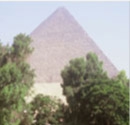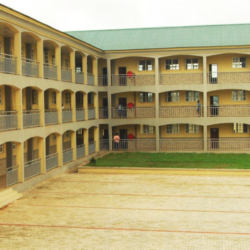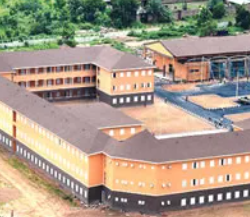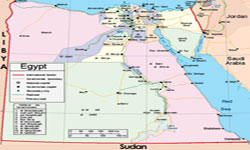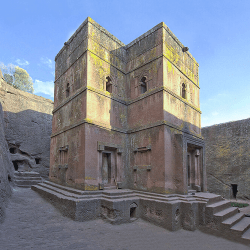Cairo, the sprawling capital of Egypt, is a city that never ceases to captivate. Situated on the banks of the mighty Nile, it’s more than just a city—it’s a living chronicle of human civilization. Home to over 8 million residents and welcoming millions more each day, Cairo stands as the largest metropolis in the Arab world. Its vibrant culture, enduring legacy, and strategic importance make it a beacon of history and progress in the Middle East and North Africa.
Ancient Roots of Cairo
Long before its official founding in the 10th century, the area now known as Cairo bore witness to ancient settlements. The fertile banks of the Nile made it an ideal place for habitation, trade, and agriculture. The river, essential for sustenance and movement, laid the foundation for what would eventually become one of the world’s most iconic cities.
Founding of Cairo by the Fatimids
Cairo was officially founded in 969 AD by the Fatimid Caliph Al-Mu’izz li-Din Allah. His general, Jawhar Al-Siqilli, was tasked with establishing a new capital for the Fatimid dynasty. On the 6th of July, 969, in the Islamic year 358 AH, construction began. This marked a new era in Islamic civilization.
One of the earliest institutions built was Al-Azhar Mosque, which quickly became a center of learning and spiritual guidance in the Islamic world. Over the centuries, Al-Azhar evolved into a prominent university, making Cairo synonymous with religious scholarship and cultural richness.
Evolution Through Islamic Dynasties
Before the Fatimids, Cairo’s site had already seen multiple Islamic capitals. Fustat, built by Amr Ibn Al-As in 640 AD, was the first Islamic city in Africa. It was succeeded by Al-Askar under the Abbasids and Al-Qatai during the rule of Ahmad Ibn Tulun. These cities eventually merged to form what we now know as Cairo, or “Al-Qahira.”
The city flourished under the Ayyubids and later the Mamluks, who left behind an incredible architectural legacy, including mosques, schools, and hospitals. The Ottomans continued this tradition, further enriching the city’s cultural landscape.
Cairo Under the Mohamed Ali Dynasty
In the 19th century, Mohamed Ali Pasha rose to power, ushering in a new era of reform and modernization. He introduced European-style institutions, improved infrastructure, and laid the groundwork for a modern state. His descendants, particularly Khedive Ismail, continued these efforts, expanding the city with European-style boulevards and buildings that still define parts of downtown Cairo.
Colonial and Modern Influence on Cairo
During the British occupation in the late 19th and early 20th centuries, Cairo underwent significant changes. While the colonial era brought challenges, it also led to the development of transportation systems, administrative structures, and architectural marvels. Post-independence, Cairo became a focal point of the Arab nationalist movement and hosted numerous summits and cultural events.
Architectural and Cultural Heritage
Cairo is a treasure trove of architectural diversity. Its Islamic monuments number over 600, ranging from the iconic Mosque of Ibn Tulun to the ornate Sultan Hassan Mosque. But Islamic architecture is only part of the story. Cairo also boasts remnants of Pharaonic, Roman, and Coptic civilizations, offering a truly layered cultural experience.
The Egyptian Museum, housing thousands of ancient artifacts including the treasures of Tutankhamun, adds another layer to Cairo’s appeal. The city is also home to art galleries, opera houses, and literary cafes that continue to nurture its cultural vitality.
The Role of the Nile River in Cairo’s Life
The Nile is the lifeblood of Cairo. It nourishes the land, powers agriculture, and offers countless recreational opportunities. Along its banks, you’ll find luxury hotels, floating restaurants, and river cruises that showcase the beauty of the city from a unique vantage point. Sports like rowing and sailing are also popular, reflecting the river’s enduring vitality.
Urban Geography and Infrastructure
Cairo stretches over 41.5 kilometers from Al-Sahel in the North to Helwan and Tebeen in the South. Despite covering only 0.3% of Egypt’s total area, it hosts a massive population due to its central role in politics, education, and commerce. Its neighborhoods range from historic Islamic quarters to modern suburbs, illustrating a city that honors its past while moving toward the future.
Continuing the article from where we left off:
Religious and Spiritual Significance
Cairo is often referred to as the City of a Thousand Minarets, and for good reason. Its skyline is adorned with mosques of immense spiritual and historical value. Al-Azhar Mosque, the heart of Sunni Islamic learning, has played a central role in shaping Islamic jurisprudence and thought.
However, Cairo’s religious diversity goes beyond Islam. The city is also home to vibrant Coptic Christian communities and some of the oldest churches in the world, such as the Hanging Church and the Church of St. Sergius and Bacchus. This coexistence of religions highlights Cairo’s long-standing tradition of religious tolerance and pluralism.
Modern Cairo: A Bustling Megacity
Today, Cairo is a metropolis of over 20 million people when accounting for the Greater Cairo area. It is Egypt’s political, cultural, and economic nucleus. Despite the challenges of congestion and pollution, Cairo remains dynamic, driven by a youthful population and a strong entrepreneurial spirit.
Major government institutions, foreign embassies, and international organizations are headquartered here, making it not just a national but a regional powerhouse in diplomacy and commerce.
Education and Cultural Institutions
Cairo is a hub of education in the Arab world. Cairo University, founded in 1908, is among the region’s oldest secular institutions, while Al-Azhar University continues to offer religious education to thousands.
Cultural institutions like the Cairo Opera House, El Sawy Culture Wheel, and countless libraries and book fairs keep the city intellectually vibrant. These centers host local and international artists, thinkers, and audiences, nurturing a rich cultural dialogue.
Transportation and Connectivity
Cairo boasts the only metro system in Africa, with three lines serving millions daily. It also has extensive road networks, railways, and plans for monorails and electric buses aimed at easing traffic and reducing emissions.
Cairo International Airport is a key gateway to Africa and the Middle East, connecting Egypt to the rest of the world. With increasing investment in infrastructure, Cairo is becoming more navigable and accessible.
Tourism in Cairo
Cairo is a top destination for global tourists. While most come for the Pyramids of Giza, the city’s heart lies in its cultural richness—Islamic Cairo, Coptic Cairo, and the bustling Khan El-Khalili bazaar. Tourists can stroll through ancient streets, enjoy traditional music and food, and marvel at centuries-old architecture.
Hotels, Nile cruises, guided tours, and museums contribute to a thriving hospitality industry. Initiatives like Cairo Eye, the upcoming Ferris wheel project, aim to make the city even more attractive to tourists.

Challenges Facing the City
Despite its wonders, Cairo faces several modern-day issues. Overpopulation, urban sprawl, and pollution are pressing concerns. The growing population strains infrastructure, public services, and housing availability.
Efforts are underway to relocate administrative functions to the New Administrative Capital, east of Cairo, to relieve urban pressure. Environmental policies are also being enacted to reduce emissions and promote sustainability.
The Future of Cairo
Cairo’s future lies in urban redevelopment, green architecture, and digital innovation. Projects like the New Cairo Smart City, solar energy initiatives, and public transportation reforms show a commitment to modernizing the city while preserving its soul.
International cooperation, investment in education, and a focus on cultural heritage preservation will ensure Cairo remains a leading city globally—one that bridges the ancient with the modern.
FAQs – Cairo: History, Culture, and Modern Importance
1. When was Cairo founded?
Cairo was officially founded in 969 AD by the Fatimid general Jawhar Al-Siqilli under orders from Caliph Al-Mu’izz li-Din Allah.
2. What is the historical significance of Al-Azhar Mosque?
Al-Azhar Mosque, founded in the same year as Cairo, has been a leading center of Islamic learning and culture for over a millennium.
3. How many people live in Cairo today?
Greater Cairo is home to over 20 million people, making it one of the largest urban areas in Africa and the Arab world.
4. What are the main tourist attractions in Cairo?
Key attractions include the Pyramids of Giza, Egyptian Museum, Khan El-Khalili, Islamic Cairo, and Coptic Cairo.
5. Is the Nile River important to Cairo?
Yes, the Nile is central to Cairo’s economy, culture, and daily life. It supports agriculture, tourism, and provides essential resources.
6. What are the major challenges Cairo is facing today?
Cairo struggles with traffic congestion, pollution, and housing shortages, but new projects and smart planning are addressing these issues.
The Enduring Magic of Cairo
Cairo isn’t just a city—it’s a living museum, a spiritual heartland, and a vision for the future. From its Fatimid origins to its modern hustle, Cairo continues to be a dynamic center of culture, religion, and innovation. As it marches confidently into the 21st century, the city’s soul—shaped by millennia of history—remains intact, offering timeless charm and boundless possibilities.



